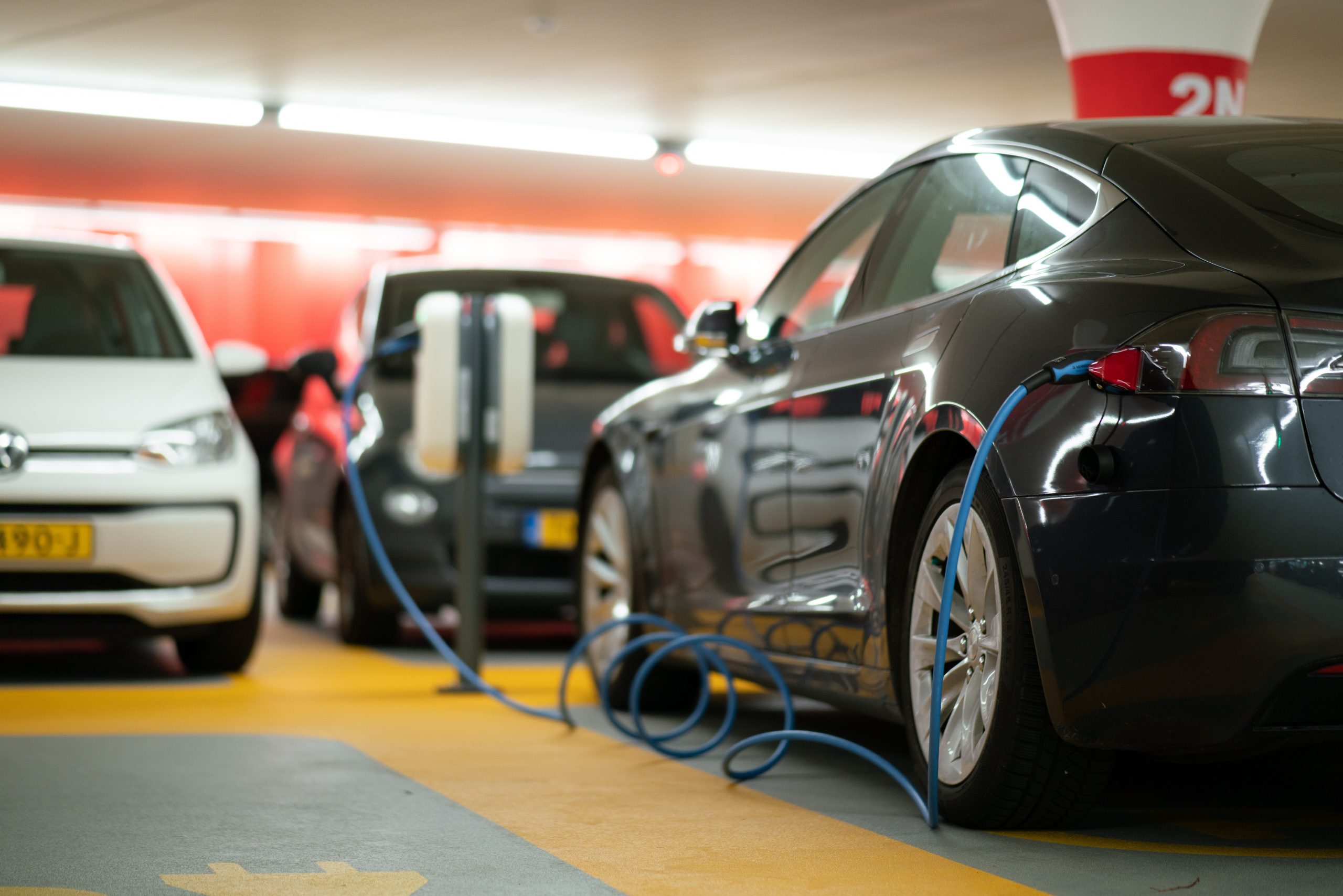
Designing for electric transport

One of the key problems we see at the moment is EVs being used as a relatively easy solution to pollution in major cities. Whilst this is definitely the case it does nothing to address the over population of private cars. In these situations there should be a focus on public transport and less reliance on cars.
Common problems
There is a change of mindset required for electric cars which is usually not anticipated. In a petrol of diesel car, the tendency is to use the vehicle until the fuel runs low and needs filling up. This process is often repeated with EVs with owners running their batteries low before visiting a rapid charger to recharge their battery.
This causes numerous issues, firstly it’s detrimental to the battery to run it too low and then charge quickly. It also means that rapid chargers are more frequently in use by locals rather than being available for travellers on long journeys who really need them. This also puts huge pressure on the power supply network, even older cars use an amount of power that is more than double the usage of an average household in a day. Finally, with soaring energy prices the rapid chargers are certainly not cheap, the faster or higher power they are, the more expensive it is per kWh. If this is the only way you recharge your car you won’t take advantage of the savings over fuel.
It’s not uncommon for the large rapid charge units to be called ‘pumps’ and there are even calls to change the design of electric charging points so they look less like traditional fuel pumps.
Instead, the method should be to slow charge the car whenever it’s not in use, such as at home overnight, at the workplace or long stay destinations such as shopping centres. Whenever the car is started it should be at 100%. Not only can this help prolong the life of the battery but it is also much more convenient, and also allows you to take advantage of the additional features offered by electric cars such as preheating the cabin on cold days (my favourite feature by far).
The rapid chargers should only be used for long journeys and are most useful at service stations, where during a leg stretch and toilet visit it’s possible to add 100miles or more to your range.
Using EVs in this way can also help to balance the country’s energy supply. There are some cars that actually allow bidirectional charging – meaning that energy can also be taken out of the car and put back into the grid. This, combined with smart meters and chargers, allows the grid to pinch back a small amount of energy from all the plugged in cars across the network when there is a spike in demand. These spikes are usually supplied by coal or gas powered generators.
This does make me wonder why there seems to be a trend to install rapid chargers anywhere, supermarkets being my biggest concern. Usually the journey to a local supermarket is quite short, maybe 5 miles? And you’re likely to have travelled from home, where the car should have been on charge and already be at 100%.
A lot of houses could have a charging point installed relatively easily, especially if there’s an available garage where it’s not uncommon for the electrical distribution board to be located.
Issues
There’s a lot of debate on whether EVs are as environmental as they claim, considering the energy sources and precious metals used to make them.
Whilst there are some environmental and political issues with the materials used in the production of batteries, these materials are endlessly recyclable in electric cars, unlike the use of Cobalt in diesel which is lost in the manufacturing process.
It’s also possible to produce energy cleanly, whereas petrol and diesel is always polluting. Where the electricity is made using non-sustainable methods, there is a greater efficiency in the scale of energy produced by the grid, rather than an internal combustion engine. Regardless, I’d rather have low emission vehicles in our towns and cities where we all have to breathe in the fumes.
Overall its certainly not perfect, but I think it’s very difficult to argue that a petrol or diesel car is still a better solution. When costs become comparable, it’s a no-brainer. There’s a new process to understand, but we’ll all learn as we have with other new tech.
Advice
Even if you don’t have an electric car yet, if you’re having any type of work done to your house where the electrics will be worked on, it’s worth having a feed installed to a suitable location for a future charger to be installed. Convenience is key here, make sure the location is not going to make it difficult or annoying to plug in every time you park up.
The holy grail of sustainable travel can come with a combination of solar panels and an EV. There are modern chargers that can control the source of energy to the car, preferring solar power over mains. In sunny summer months you can then run your car entirely on free energy.
For commercial clients I would advise that it’s not even necessary to install a roper charger, a lot could be achieved by simply installing standard IP rated sockets in a suitable location. Nearly every EV owner will have a three pin charger which are fine for use when plugging in overnight, as long as your visitor is aware they need to bring their own charger with them. The only downside here is that you wouldn’t be able to recharge for the energy used, which is not an issue for many clients who may offer the service for free as part of their facilities.
If you do want to recoup the costs, look no further then PodPoint, their system has been very reliable in my experience and you can set the tariffs, even offering different rates to staff. For long stay environments, you don’t need a massive power supply, a 7kw charger would be ample for anyone who is staying overnight.
This standard plug situation would be ideal for hotel car parks, holiday homes and destinations such as theme parks.


